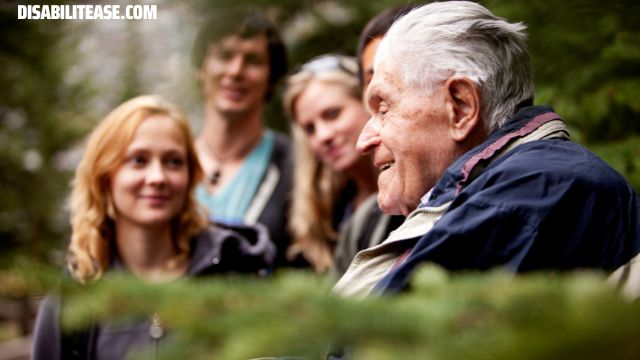As the elderly population continues to grow, the need for resources and support for them is becoming increasingly important. Starting a nonprofit organization for the elderly is a noble cause that can make a significant impact on this community.
If you are passionate about this cause and want to make a difference, this guide will provide you with a detailed outline of the steps to follow.
In this guide, I will walk you through the essential steps of starting a nonprofit organization for the elderly.
Here is a bullet point list that summarizes the topics covered in this post:
- The benefits of starting a nonprofit organization for the elderly
- The steps to take when starting a nonprofit organization for the elderly
- How to create a mission and vision statement for your nonprofit organization
- The importance of building a strong team and recruiting board members
- Fundraising strategies for nonprofit organizations
- How to obtain tax-exempt status for a nonprofit organization
- The costs associated with starting a nonprofit organization and ways to reduce them
- Alternatives to starting a nonprofit organization for the elderly
Read More: Best 7 Kindle Fire for Elderly In 2023.
Table of Contents
7 Steps To Take When Starting A Nonprofit Organization For The Elderly

- Understanding the Needs of the Elderly
Before starting a nonprofit organization, it is essential to understand the needs of the elderly population. The elderly may need access to affordable healthcare, social activities, and resources for living independently. You can conduct research to understand the needs of the elderly population in your area. Reach out to experts, healthcare providers, and other nonprofit organizations to gain insight into the most pressing needs of the elderly.
- Deciding on a Mission and Vision
A nonprofit organization needs a mission and vision statement that defines its purpose and goals. A mission statement defines what the organization does, while a vision statement outlines the desired future impact. Your mission and vision statement should be clear and concise. They should align with the needs of the elderly population you want to serve.
- Developing a Strategic Plan
A strategic plan provides a roadmap for the nonprofit organization’s operations and growth. It outlines the organization’s goals, strategies, and resources. To develop an effective strategic plan, you must identify your nonprofit’s strengths, weaknesses, opportunities, and threats. Consider potential partnerships, fundraising, marketing, and program development.
- Legal Considerations for a Nonprofit Organization
Nonprofit organizations have legal requirements that must be met to operate effectively. Incorporation, obtaining tax-exempt status, and compliance with state and federal regulations are some of the legal requirements you must follow. It is essential to seek legal advice to ensure you meet all the necessary legal requirements.
- Fundraising for a Nonprofit Organization
Fundraising is crucial to the success of a nonprofit organization. There are several fundraising strategies, including grants, donations, and events. You can also develop a fundraising plan that outlines your nonprofit’s goals and strategies. It is important to maintain transparency in your fundraising efforts to build trust with donors.
- Building a Strong Board of Directors
A nonprofit organization’s board of directors plays a vital role in its success. The board of directors provides leadership, strategic direction, and oversight of the organization’s operations. You must identify potential board members who have the necessary skills and experience. It is important to build a diverse and inclusive board that aligns with the organization’s mission and vision.
- Recruiting and Managing Volunteers
Volunteers are essential to the operations of a nonprofit organization. To recruit and manage volunteers effectively, you can create a volunteer program that includes training, recognition, and ongoing communication. Volunteers should be treated with respect and appreciation, as they are an integral part of the nonprofit’s success.
The Benefits Of Starting A Nonprofit Organization For The Elderly

Starting a nonprofit organization for the elderly can provide a range of benefits, including:
- Addressing a critical need in the community: Nonprofit organizations can focus on providing services and resources that meet the specific needs of the elderly population, such as healthcare, transportation, and socialization.
- Creating a sense of community: Nonprofit organizations can bring together volunteers, donors, and supporters who are passionate about supporting the elderly and creating a positive impact in their lives.
- Fostering social responsibility: Nonprofit organizations can raise awareness about the challenges faced by the elderly population and inspire individuals and businesses to take action and support their cause.
- Providing tax benefits: Nonprofit organizations can obtain tax-exempt status, which can help to reduce the organization’s operating costs and increase the impact of its programs and services.
How To Start A Nonprofit Organization With No Money?
Starting a nonprofit organization with no money requires careful planning and creativity. You can start by developing a detailed plan, reaching out to potential partners and supporters, and leveraging social media to raise awareness. Crowdfunding and in-kind donations can also help reduce initial startup costs.
How Much Does It Cost to Start a Nonprofit Organization?
The cost of starting a nonprofit organization varies depending on the organization’s size, location, and programs. Incorporation and obtaining tax-exempt status can cost several hundred dollars.
Other costs may include legal fees, marketing expenses, office rent, staff salaries, and program costs. However, some of these costs can be reduced or eliminated by using volunteers, donated office space, and in-kind donations.
9 Alternatives To Starting A Nonprofit
Starting a nonprofit organization is not the only way to make a positive impact on the elderly community. Here are nine alternatives to starting a nonprofit:
- Volunteer for an existing nonprofit organization that serves the elderly.
- Partner with an existing nonprofit organization to launch a new program.
- Create a social enterprise that provides products or services to the elderly.
- Work with local businesses and government agencies to create a resource directory for the elderly.
- Develop an online platform that connects the elderly with resources and services.
- Host community events that promote awareness and support for the elderly population.
- Lobby for policy changes that benefit the elderly community.
- Create a social media campaign that raises awareness of the needs of the elderly.
- Start a for-profit business that hires and trains the elderly.
How To Create A Mission And Vision Statement For Your Nonprofit Organization?
Creating a mission and vision statement is a crucial step in developing a nonprofit organization. Here are some tips for creating effective statements:
- Mission statement: This statement should define the purpose and objectives of the organization. It should be concise, memorable, and reflective of the organization’s values and goals.
- Vision statement: This statement should articulate the desired future state of the organization. It should be inspirational, forward-looking, and aligned with the organization’s mission.
To create effective statements, involve key stakeholders in the process, conduct research on best practices, and solicit feedback from experts and supporters.
Fundraising Strategies For Nonprofit Organizations

Fundraising is an essential part of running a nonprofit organization. Here are some fundraising strategies to consider:
- Grant writing: Research and apply for grants from private foundations, corporations, and government agencies.
- Individual donations: Solicit donations from individual supporters through direct mail, online campaigns, and special events.
- Corporate sponsorships: Partner with businesses and corporations to sponsor events, programs, or other initiatives.
- Special events: Host fundraising events such as auctions, galas, and charity walks to engage donors and supporters.
To maximize fundraising efforts, develop a fundraising plan, diversify revenue sources, and establish meaningful relationships with donors.
How To Obtain Tax-Exempt Status For A Nonprofit Organization?
Obtaining tax-exempt status is critical to a nonprofit organization’s financial sustainability. Here are the steps to take:
- Choose the appropriate legal structure for the organization, such as a 501(c)(3) or 501(c)(4).
- Develop articles of incorporation and bylaws that meet the legal requirements for tax-exempt status.
- Apply for an Employer Identification Number (EIN) from the Internal Revenue Service (IRS).
- File Form 1023 or Form 1024 with the IRS to apply for tax-exempt status.
- Wait for the IRS to review and approve the application.
To increase the chances of approval, seek professional guidance from an accountant and a lawyer, be thorough and accurate in the application, and maintain compliance with ongoing reporting requirements.
Frequently Asked Questions [FAQs]
What Are The Most Pressing Needs Of The Elderly Population?
The most pressing needs of the elderly population include healthcare, transportation, housing, socialization, and access to services and resources.
How Long Does It Take To Obtain Tax-exempt Status For A Nonprofit Organization?
The process of obtaining tax-exempt status for a nonprofit organization can take several months, and sometimes up to a year, depending on the complexity of the organization’s structure and activities.
What Are The Benefits Of Partnering With An Existing Nonprofit Organization?
Partnering with an existing nonprofit organization can provide access to resources, expertise, and funding. It can also help to reduce administrative and operating costs.
How Can I Find Potential Board Members For My Nonprofit Organization?
Potential board members can be found through personal and professional networks, online recruiting platforms, and referrals from other nonprofits or community organizations.
What Is The Most Effective Fundraising Strategy For A Nonprofit Organization?
The most effective fundraising strategy for a nonprofit organization depends on the organization’s goals, target audience, and available resources. Some common fundraising strategies include grant writing, individual donations, corporate sponsorships, and special events.
How Can I Reduce The Costs Of Starting A Nonprofit Organization?
The costs of starting a nonprofit organization can be reduced by using volunteers, donated resources, and in-kind donations. It is also important to develop a budget and prioritize expenses.
What Are The Legal Requirements For Starting A Nonprofit Organization?
The legal requirements for starting a nonprofit organization vary by state and country but generally include registering with the appropriate government agency, obtaining tax-exempt status, and developing articles of incorporation and bylaws.
How Can I Recruit And Manage Volunteers Effectively?
Volunteers can be recruited through online platforms, social media, and community outreach. To manage volunteers effectively, it is important to provide clear instructions and expectations, offer training and support, and recognize and reward their contributions.
What Are The Risks Of Starting A Nonprofit Organization?
The risks of starting a nonprofit organization include financial instability, legal liabilities, and reputational damage. It is important to develop a risk management plan and to maintain transparency and accountability to donors and supporters.
Conclusion
Starting a nonprofit organization for the elderly requires commitment, dedication, and hard work. By following the steps outlined in this guide, you can create an organization that makes a positive impact on the lives of the elderly.
Remember to stay focused on the mission and vision, build a strong team, and maintain transparency and accountability to donors and supporters.
For more details on this subject, please check out this post that I published recently Adaptive Equipment For Grooming & Shaving For Disabled And Elderly| What’s Available?

Hi, my name is Eddie, I am a professional trainer specializing in the elderly population and I’m also a website designer. I love training in the gym, going to the beach, traveling, and having good food.
I combined my love for sport and website designing to make “DisabilitEase” whose purpose is to help elderly and disabled people live a more full and active life, have more fun, and enjoy their unique journey despite any disability.



